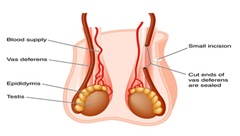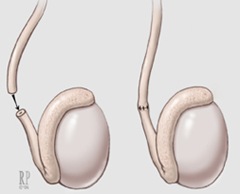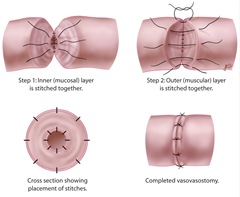The vasectomy reversal procedure is not necessarily the most invasive procedure and overall risks to it are lower than some procedures. However, it is the type of procedure that requires an experienced and well trained doctor. The procedure is one that can be successful in restoring your ability to ejaculate with sperm, but it is important that you understand the procedure, how it happens, and what occurs throughout it before you make the decision to move through it. A consultation with an experienced urologist is the best first step for most people.
What Happens in a Vasectomy Reversal?
The procedure is performed in an outpatient surgical building or a hospital. The surgeon will be done using a microscope and is often called microsurger
y as a result. In some situations, men will need more controlled conditions requiring a hospital setting. In most cases, the patient is asleep with the use of anesthesia.
The doctor will use a microsurgical approach whenever it is possible to do so. This process involves a high powered microscope that allows for the magnification of the vas tubes at as high as 40 times their size. This allows the urologist to locate them and then stitch them together. It’s important to realize that the stitches used are thinner than an eyelash or a hair. These need to be connected to the vas to allow the tube to regain proper and normal flow of sperm.
Once you are asleep, your doctor will make a small cut on each side of the scrotum. Then, he or she will cut the scarred ends of the vas. This is the area where the vas was cut previously. They are scarred because that is the way a vasectomy stops the flow of fluid in the body. Then, the doctor will determine the proper approach for reattachment based on whether or not sperm is present in the fluid. Vasovasostomy and vasoepididymostomy are the two most common reconnection methods.
Most patients will need to spend some time at the hospital to recover, but going home the same day is quite common. The procedure can take some time to recuperate from as well. Your doctor will discuss what you can expect from this at the time of your discharge.
Are You Ready?
It’s best to learn what the options are for you specifically by making an appointment with the best urologist in New York to learn more. Contact us at 646-862-5500 to schedule a consultation.



